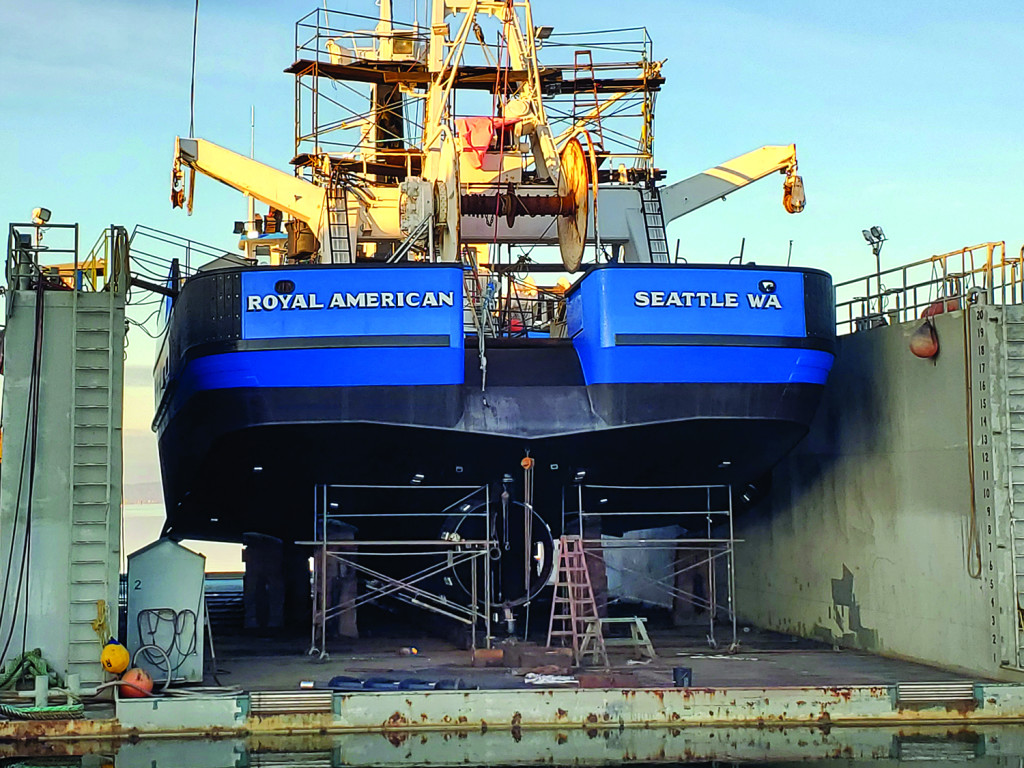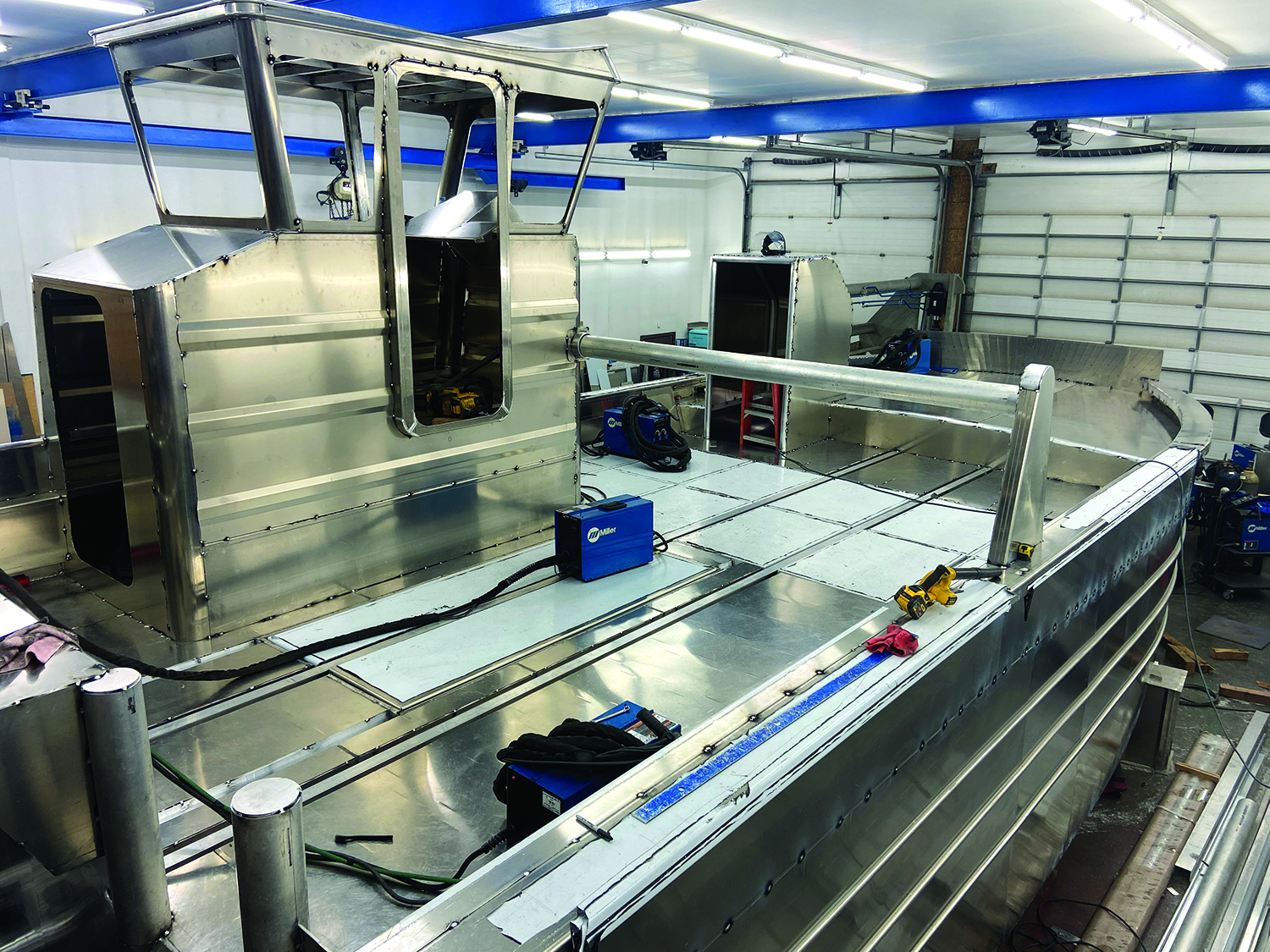The last time Jeff Johnson at Peregrine Boats in Chugiak, Alaska, built a Bristol Bay gillnetter like the one that’s currently under construction was 23 years ago. That was for Tim Mikkelsen, the father of Caleb Mikkelsen, a Palmer, Alaska, fisherman who is having the current boat built.
The 32' x 15' gillnetter has similarities to the bow- and stern-picker style that features an elevated wheelhouse on deck stanchions, with the reel passes beneath the wheelhouse as it goes from bow to stern. The reel turns 180 degrees so it can fish off either end.
Johnson built an elevated wheelhouse design for the 2020 Bristol Bay season and a pair for the 2019 season, after not building one for 20 years. But Mikkelsen’s bow and stern picker “is a little different,” Johnson says.
It features a 5-foot-wide by 9-foot-long wheelhouse not on stanchions over the deck but built on the side of the deck with the reel passing next to it, as it travels between the bow and stern.
Mounting the wheelhouse on one side of the boat “provides quite a bit more deck space since there aren’t a pair of 3' 6" x 4' deck stanchions taking up space,” says Johnson. In addition there’s not the blind spot of not being able to see the deck beneath the stanchion-mounted wheelhouse, and with the wheelhouse on deck there’s less windage. Johnson says, he “doesn’t know if anyone else has recently built a similar boat.”
The wheelhouse will have windows all the way around, a rain-gear locker and a head. In the fo’c’sle will be four bunks, a head and a small galley. This gillnetter is designed to fish in very shallow water. It has a 15-foot beam on deck as well as on the bottom, with only a 4-degree V. “It’s super shallow. He’s hoping to get 2 inches less draft than the guy next to him and fish in 14 inches (of water),” says Johnson.
In the engine room will be a pair of 550-hp 6.7-liter Fiats matched up with 18-inch Traktor Jets, which should be enough power to get up to the mid-30 mph range and on step with 10,000 pounds aboard. The fish hold has a 24,000-pound capacity.
At Hansen Boat Co. in Everett, Wash., the 105-foot Royal American, which the boatyard built in 1980 and sponsoned about 15 years ago, was in the dry dock for a deck alteration that Hansen Boat’s Rick Hansen says, “I’ve never seen done before.”
The Royal American, which is basically a pollock boat, had three fish holds, each with a large steel hatch cover. Like most steel hatch covers, these get beat up, leak and occasionally have to be rebuilt. Well, no more because those hatch covers are no longer there. “The owners just said, forget it and deck them over,” says Hansen. Thus the holds were decked over and in place of the three deck hatches are three 24-inch manhole covers.

With the manhole covers, there’s “less chance of leakage into the tanks and a nice smooth surface for bringing the nets up and pushing fish around” and into the holes, says Hansen. The pollock, which are floating in seawater in the fish holds, will be pumped out. While the Royal American was in the dry dock the tail shaft and shaft bearings were replaced.
Also into Hansen Boat was the Odin, a 58-foot combination boat out of Petersburg, Alaska, that was hauled to have the bottom checked over. Due into Hansen Boat this coming April is another older dragger, the 95-foot Nordic Fury, which was built by Martinolich Shipbuilding in Tacoma, Wash., in 1972, as a crabber but was then sponsoned 20 years ago and turned into a dragger. Not long after the sponsoning, Hansen Boat replaced the wheelhouse. “Now they come in every two years to do a haul-out,” Hansen says.
Speaking in general of the larger commercial fishing boats that show up regularly at the Everett boatyard, Hansen says, “These guys, every two years they dump a lot of money into the boats to keep them moving.”







